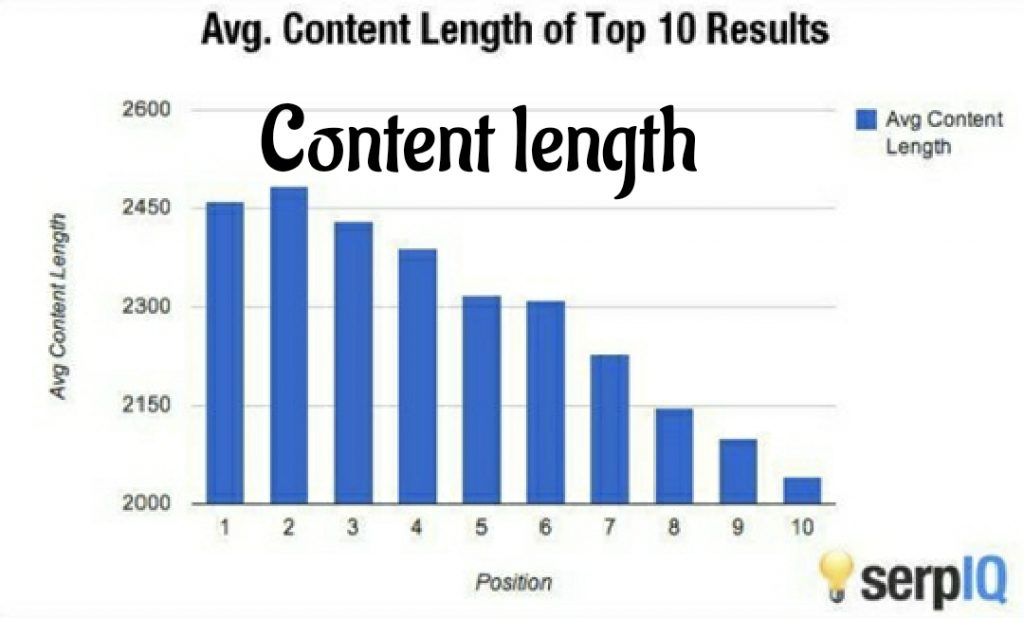
Hello friends, if you have a blog or website, then this post will be very helpful for you. Today we will know “The full guide to On-Page SEO in 2021” After this post you will get complete knowledge of on page seo.
Because on-page seo can move your website traffic from 0 to 100 positions, and it plays an important role in increasing rankings in search engines. You should be aware of “The full guide to On-Page SEO in 2021 “So let’s know about this: –
Table of Contents
The full guide to On-Page SEO in 2021
- Pay attention to content quality
- Optimize your title
- Pay attention to the length of your content
- Create SEO friendly URLs for your blog posts
- Do keyword research before writing a post
- Use our Long Tail keywords for your article.
- Optimize Your Images
- Do not do keyword stuffing
- Keep your site mobile friendly
- Use your focus keyword in the first 100 words
- Improve the loading speed of your site
- Optimize Meta Descriptions
- Use Proper Heading Tags
- Regularly Fresh and Write New Posts
- Fix broken links in your content
- Internal Links
- Using related keywords in content
- Using Nofollow Tags for Affiliate Links and Unstrusted Links
- Use Outbound Links
- Use social sharing buttons
- Use Power Word in your title
- Use Images and Video in Your Posts
- Keep Your Site Clean and simple
Some tips about On Page SEO
1. What is SEO and why is it important
The full guide to On-Page SEO in 2021:- The full meaning of SEO is – search engine optimization. This helps you achieve good rank in SERPs and increase the number of visitors to your site.
If you write quality content on your blog, but do not do SEO, then your website will not appear in the search results.
Because when users search for anything, the search engine will not be able to bring your site in the list of serpents. This means traffic will not be able to come to your website without SEO.
2. What are the 2 types of SEO
There are mainly two types of SEO,
2.1 On Page SEO – Optimizing content quality, keywords, titles, tags, keyword research, etc. is called on Page SEO. Without On Page SEO, no website or blog can rank in the search engine, no matter how good content you write.
2.2 Off page SEO – In this SEO process, link building and promotions are involved.
But here I am only talking about on page SEO –
On-Page SEO is a technique in which we optimize content title, permalink, meta description, website loading speed, alt tag, etc. So that we can get the first rank in content SERPs.
So you have to follow some tips so that you can get good traffic on your website.
1. Pay attention to content quality
The full guide to On-Page SEO in 2021 – This is the first and necessary step. Always write unique content and something new on your blog.
If you do not write quality content, then the user will not stay on your blog for long and they will leave your blog soon, which will increase your bounce rate, in addition Google will not rank flame-quality content in the top 10.
When Google ranks a content, it uses a variety of ranking factors. Apart from this, the quality of the content also depends on Google. It is also said that content is king, so write good content.
2. Optimize Your Title
When search engines crawl your content, they crawl many things – one of them being a title.
In addition, it makes a deep impact on the visitor or user. The title should always attract visitors. If your title does not attract visitors, they will never click on your content. No matter how well you have written the article.
Always put your main keyword at the beginning of the title. Sometimes it can happen that if you have trouble keeping it in the beginning, then you can put it in the middle. This will help your search engine understand what your content is about.
read also https://earningfocus.com/2020/06/25/what-is-seo-and-how-to-do-seo/
3. Pay attention to the length of your content
Long articles are very good as compared to short articles. Google gives more importance to the lengthy article.
You must have understood well by looking at the image. So always write detailed, high-quality and length articles. Keep in mind that you do not write unnecessary things to increase the length of your content.
4. Create SEO Friendly URLs for Your Blog Post
Always keep the URL of your post short and add keywords to it. This helps the search engines understand your post.
Avoid using special variables, symbols, brackets, commas in the URL.
Always try to make short and readable URLs. Longer URLs are not fully visible in search results.
5. Do keyword research before writing a post
The full guide to On-Page SEO in 2021 – Keyword research is an important part of on-page SEO. If you have written unique and very useful articles on your blog, but have not done keyword research, then your articles will not be able to rank in SERPs. Because keyword research helps to know CPC and competition.
There are many good tools and websites that will help you find good keywords related to your article.
Always use keywords with low competition and high searches for your article and for this you can use Google AdWords Keyword Planner.
6. Use our Long Tail keywords for your article.
Long Tail Keywords are very important in increasing website traffic. They are highly targeted.
Benefits of using Long Tail Keywords
Low competition.
Better conversion rates.
Good rank in search result
Helps in more traffic from search engines.
read also https://earningfocus.com/2020/07/20/how-to-do-keyword-research-2020/
7. Optimize Your Images
There are many bloggers who ignore image optimization. They do not use proper name and ALT tag for their images which is against on-page SEO optimization.
Before uploading your images, always use the correct name for them. And use your focus keyword for ALT tag.
Additionally, if you use images for your content, resize and compress it. This helps reduce your image size and also reduces your site load time.
8. Do not do keyword stuffing
Keyword Stuffing puts a bad experience on the user and also affects your search ranking.
You think that using a lot of keywords in a blog post will bring more traffic, but this technique can also lead to penalty on your site. Keyword density should be kept at 1% -2% in your post.
9. Keep your site mobile friendly
Your site has to be mobile friendly. If your blog or website is not mobile friendly, Google will reduce your ranking and this will reduce the traffic coming to your site.
Because more searches are done on mobile. That is why it is important that your website looks good in mobile and performs well.
To know whether your site is mobile friendly or not, you can use Google’s Mobile Testing Tool.
10. Use your focus keyword in the first 100 words
The full guide to On-Page SEO in 2021:– Be sure to use the focus keyword once in the 100 words of the beginning of the article. This helps Google understand what your content is written about.
Additionally, link your article to the first paragraph of the content. This will make your content more SEO friendly and your content will perform well in SERPs.
read also https://earningfocus.com/2020/07/28/how-to-write-seo-friendly-article-2020/
11. Improve the loading speed of your site
Google uses page speed as a ranking. So your website should load fast, if your site is loading very slowly, then Google will not bring your site in the top 10 rank.
In addition, visitors do not like to visit slow loading sites. Fast loading site likes both rankings and users and achieves good rank in search results.
Some tips to correct website loading speed
Upgrade to PHP 7.2
Optimize Your Image Size
Keep only useful plugins in the site
Delete unwanted media
Minify CSS and JS Files
Use good cache plugin
Minimize Redirects
Get good web hosting
12. Optimize Meta Descriptions
Meta Descriptions is a brief description of the content that you see in the search results below the title. This helps to increase the Click Through Rate (CTR) on your content. Do use the Focus keyword in your Meta Descriptions. A meta description typically consists of 150–160 variables.
13. Use Proper Heading Tags
The full guide to On-Page SEO in 2021 – The H1 tag improves your ranking and helps search engines understand what your page is about.
There are many WordPress themes that do not use H1 tags for titles. You should use the H1 tag for your title. Use the H1 tag only once in your content.
Additionally, heading tags help you write a good post. Suppose you have written a post that is 5000-6000 words in length, but if you do not use the correct Heading Tags, then the reader will find it difficult to read your post.
14. Write Fresh Fresh and New Posts
This increases both your ranking and traffic. But your post should be informative and knowledgeable. Users like to read blogs that are new and unique. With this, Google also gives priority to such blogs.
If you publish 2 posts a week, but do not write anything the next week, then you should not do this. You must make at least 2 posts in a week.
15. Fix broken links in your content
If there are too many Broken Links (404 not found) in your site, then Google will crawl your site slowly. Google will understand that you have not maintained your site well.
Broken Links gives a bad experience to both your site ranking and user.
To get rid of broken links, you can use the Broken Link Checker plugin. This plugin fixes internal and external broken links on your site.
read also https://earningfocus.com/2020/06/02/what-is-niche-blog-or-micro-niche-blog/
16. Internal Links
Internal linking is very important for SEO.
When you link your old article to a new article, it is called internal linking. Let us know its benefits –
Link juice passages.
Boost Page Views.
Reduce Bounce Rate
This makes your article more informative and user-friendly.
This makes Google crawl your site faster and better.
This improves your website or blog SEO.
17. Using related keywords in content
The full guide to On-Page SEO in 2021 – According to On Page SEO, it is not good to use only focus keywords in content. Keywords related to focus keywords should also be used in your content. So that search engines or Google can understand your articles well and rank them on the first page.
18. Using Nofollow Tags for Affiliate Links and Unstrusted Links
If you use affiliate links in your article or link to untrusted links, then rel = “nofollow” tags should be set for them. And for this you can use the Ultimate Nofollow plugin. This plugin gives full control over rel = “nofollow” tag.
Additionally, if you use the Affiliate plugin to restrict your affiliate links, you can set a no-follow attribute for your affiliate links using the plugin.
19. Use Outbound Links
When you connect your article with outbound link, it makes your article more informative for the user. In addition, Google also helps to find the article.
When you link your posts to an external site, you should keep several things in mind – the content of that site should be relevant and usefull, the site should not be spam, its site should have good DA and PA.
20. Use social sharing buttons
The full guide to On-Page SEO in 2021 – Social signals do not play a direct role in ranking your site. But it helps to bring more people to your content. Which increases traffic to your site.
Use social sharing buttons below every post or at the beginning of the post. So that users can easily share your posts on their favorite social platforms.
read alsohttps://earningfocus.com/2020/06/16/how-to-earn-money-from-google-adsense/
21.Use Power Word in your title
Modifiers Word or Power Words (“2020”, “best”, “guide”, “checklist”, “fast” and “review”) attract more users. They make a good impression on the user and the visitor forces your content to be read.
22. Use Images and Video in Your Posts
When you add images and videos to your content or article, it makes your content more attractive and useful for the user.
1 image is equal to 1,000 words but the images must be related to your content.
23. Keep Your Site Clean and Simple
The full guide to On-Page SEO in 2021 – The design of any site leaves a good impression on the user. There are many great WordPress themes in the market which will give clean and simple design to your site. But new bloggers make their site so colorful that they start distracting the visitor’s attention.
The full guide to On-Page SEO in 2021
Use your focus keyword in the title.
Use focus keyword in permalink.
Put your focus keyword in the first paragraph.
Use your focus keyword in the image’s ALT Tag.
Before uploading images, give it the correct name.
Use the related keyword in your content.
Using long tail keywords in your content.
Keep the keyword density around 1% to 2%.
Use infographics and videos in your articles.
Your post length must be at least 1000 words or more.
Keep the URL in your post short.
Compress and resize them before uploading the image.
Boost page load speed.
Write a Catchy title for your blog post and use 65 characters.
Writing custom and attractive meta descriptions and using 120 variables
Link your old article with the new article (internal linking).
Add external links to your article.
Use H1 tag only once.
Keep your site mobile friendly
Write new and quality articles daily on your blog.
Use the word modifiers in the title.
Keep your site design clean and simple.
Correct broken links in content.
Use the social share button below each post or at the beginning of the post.
Using Nofollow tags for affiliate links and untrusted links.
read also https://earningfocus.com/2020/12/30/rank-math-seo-plugin-settings/
These are some on Page SEO tips that will help increase traffic to your site.
I hope you have liked my post “The full guide to On-Page SEO in 2021” on this page, if you have any question in your mind then please comment and tell us.



Leave a Reply